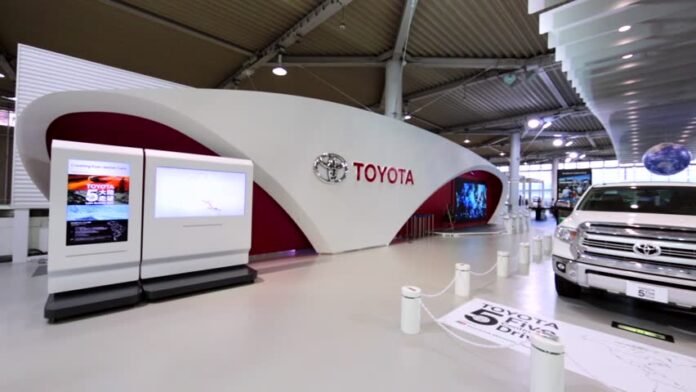The operating profit of Toyota Motor Corporation has increased to $5.09 billion, an increase by 11 per cent in the latest quarter as the automaker tapped growing demand for light trucks.
The report covers the automaker’s fiscal second quarter ended September 30, 2018 while net income grew 28 per cent to 585 billion yen ($5.15 billion). Also, revenue increased 2.3 per cent to 7.31 trillion yen ($64.3 billion).
Meanwhile, global retail sales edged ahead 1.9 per cent to 2.68 million vehicles in the July-September period, including results from its Daihatsu small-car subsidiary and truck-making affiliate Hino. Worldwide wholesale volume added just 0.4 per cent to 2.18 million.
Announcing the earnings results on Tuesday, Senior Managing Director Masayoshi Shirayanagi partly credited big gains from a richer mix of more profitable models as Toyota concentrates on the booming global demand for crossovers, SUVs and other light trucks.
According to the auto firm, profits also ticked higher as the Camry sedan and RAV4 compact crossover reigned in incentives and lifted pricing power thanks to a new round of vehicles riding on the company’s modular platform, dubbed the Toyota New Global Architecture. The updrafts offset a 20 billion yen ($175.9 million) hit from foreign exchange rates.
Toyota is also reviewing its entire U.S. lineup and could dump nameplates or models that are falling out of favor.
“We are taking a hard look at all of the segments that we compete in to make sure we are competing in profitable segments and that products we sell have strategic value,” Jim Lentz, the company’s North America CEO, said here after the automaker reported a rise in quarterly profits Tuesday.
Toyota joins automakers including Ford Motor Company and Fiat Chrysler Automobiles in rethinking product portfolios in a market that is becoming increasingly dominated by light trucks. Lentz said his company will not abandon passenger cars but it is scrutinizing offerings in some areas, such as convertibles or coupes.
Toyota has also refined its incentive strategy for a more tailored approach, he said. The Toyota brand’s average U.S. outlays are down $145 per vehicle this year and are about $1,200 below the industry average, he said. Lexus spiffs are flat, even as the segment’s average increases.
“We’re putting dollars where we’re going to get the most bang for our buck,” Lentz said. “Most importantly today is incentivizing vehicles that are much more profitable.”
While the Toyota brand’s incentives on passenger cars fell 16 percent through September, for instance, spending on light trucks increased 8 percent, according to Autodata.
North American wholesale deliveries dipped 1 percent to 665,000 vehicles in July-September. But regional operating profit rose 12 percent to 58.9 billion yen ($518.1 million).
In Europe, wholesale volume increased 4.8 percent to 240,000 vehicles in the quarter. European regional operating profit more than doubled to 38.7 billion yen ($340.4 million).
Citing the improved sales footing and a forecast for more cooperative in foreign exchange rates, Toyota lifted its earnings outlooks for the current fiscal year ending March 31, 2019.
Toyota now expects operating profit to essentially break even from last year. It had earlier predicted a 4.2 percent decline in full-year operating profit. In net income, Toyota now sees a 7.8 percent decline, a less severe decrease than the 15 percent drop it had originally forecast.
Source: City Business News
http://citybusinessnews.com/toyota-declares-5-09b-profit-2-68m-sales-in-second-quarter/
Toyota motor records $5b profit
RELATED ARTICLES




